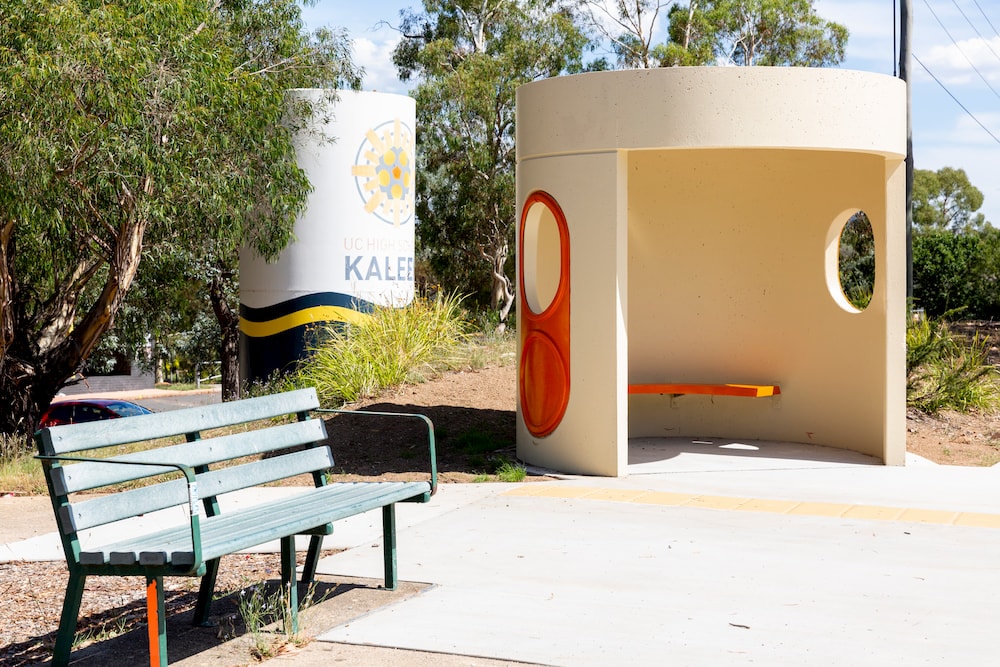Residents in some of Canberra’s newer suburbs, and more established, may have seen one of 11 freshly painted, rehomed Clem Cummings bus shelters pop up in their neighbourhood recently.
Those shelters found new homes late last year as part of a Transport Canberra program that started 12 months ago to relocate shelters from redundant sites into new, suitable locations with strong patronage.
The iconic bus shelters have popped up along Opperman Avenue in Wright, Crackajack Way in Moncrieff, Handbury Way in Forde, Roden Cutler Drive in Bonner, Box Hill Avenue in Conder, Bandjalong Cresent in Aranda, Launceston Street in Phillip, Tharwa Drive in Gordon and Baldwin Drive in Kaleen.
Carl Pillig, Transport Canberra Assistant Director of Network Planning, told Canberra Daily the new sites were decided based on several factors, including community feedback, open areas near parklands that required shade, and spreading them out amongst new and developing suburbs.
“Things like patronage, as well,” he said. “It’s not always about patronage but if there’s an area with good high demand for bus stops, we look at that as well.”
Mr Pillig, who has worked in public transport for 30 years, started as apprentice mechanic and has been involved in rehoming Canberra’s bus shelters for the past decade.
He said the relocation process for the shelters has been happening since they were first installed across town in the 1970s.
“Where we can, we certainly reuse the shelters,” he said.
“When people see one disappear, they think it’s gone from the Canberra landscape when in fact it’s moved to a new home and is being used by the new networks that come online.
“One thing we get asked a lot is what happened to that one on Constitution Avenue lying on its back for months – it’s safe and sound and went to a new location in Bruce.
“It’s very rare we lose one from the network. It happens from time to time, but it’s very rare.”
Given the concrete bus shelters each weigh approximately nine tonnes, Mr Pillig said the process of relocating them was understandably quite labour-intensive.
“It takes a team of people, it starts with design, and then the drawings, all the traffic management; the move involves breaking out existing concrete from the base of shelter,” he said.
A specific type of crane is then brought in to lift the structure, which is done by running a sling through the shelter’s windows. It’s then picked up, loaded onto a truck, and moved to its new location.
New sites are prepared with foundations, then the shelter is dropped into place.
With all 11 bus shelters having been rehomed across Canberra by Christmas, Mr Pillig said subsequent community feedback has been “really positive”.
“We’re very mindful in the newer suburbs of where to place them … They’re not actually on somebody’s front lawn generally,” he said.



